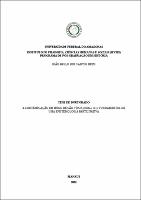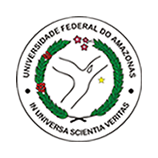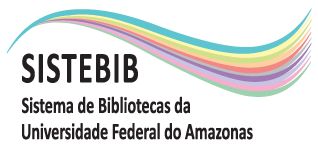| ???jsp.display-item.social.title??? |


|
Please use this identifier to cite or link to this item:
https://tede.ufam.edu.br/handle/tede/11218Full metadata record
| DC Field | Value | Language |
|---|---|---|
| dc.creator | Santos Neto, João Paulo dos | - |
| dc.creator.Lattes | http://lattes.cnpq.br/4788052089673766 | eng |
| dc.contributor.advisor1 | Gonçalves, Sínval Carlos Mello | - |
| dc.contributor.advisor1Lattes | http://lattes.cnpq.br/3690012351335425 | eng |
| dc.contributor.referee1 | Almeida, Átila Augusto Vilar | - |
| dc.contributor.referee2 | Freitas, Edmar Checon de | - |
| dc.contributor.referee3 | Clímaco, Joana Campos | - |
| dc.contributor.referee4 | Silva, Pedro Rodolfo Fernandes da | - |
| dc.date.issued | 2025-09-15 | - |
| dc.identifier.citation | SANTOS NETO, João Paulo dos. A contemplação em Hugo de São Vítor (1096-1141): fundamentos de uma epistemologia participativa. 2025. 193 f. Tese (Doutorado em História) - Universidade Federal do Amazonas, Manaus (AM), 2025. | eng |
| dc.identifier.uri | https://tede.ufam.edu.br/handle/tede/11218 | - |
| dc.description.resumo | A presente tese insere-se no debate historiográfico sobre a chamada “descoberta da natureza” e a “descoberta do indivíduo” no século XII, discutindo a pertinência dessas categorias para a compreensão da mística e da teoria do conhecimento de Hugo de São Vítor (1096–1141). A leitura historiográfica tradicional do Renascimento do século XII, ao enfatizar o interesse pelo mundo natural e a valorização da interioridade humana como sinais de uma racionalidade emergente, tende a enquadrar o pensamento medieval num processo evolutivo orientado para o naturalismo moderno e para concepções modernas de indivíduo. Tal perspectiva, contudo, não explica adequadamente a permanência e a centralidade de modelos analógicos de conhecimento, nos quais o visível remete ao invisível e o criado participa, por similitude, das realidades divinas. A partir dessa problemática, a tese propõe interpretar o saber contemplativo vitorino como expressão de uma epistemologia participativa que, longe de reduzir a natureza e a interioridade humana a objetos autônomos de investigação, compreende-as como mediações de uma relação entre Deus e o ser humano. Essa epistemologia, fundada na ideia de que todo conhecimento verdadeiro é participação na Sapiência divina, revela que o interesse vitorino pelo mundo criado e pela alma humana é inseparável de uma ontologia que os concebe como signos e vestígios da realidade suprema. A investigação combina análise de fontes primárias — notadamente o Didascálicon, o De Sacramentis e o De Tribus Diebus — com o exame das categorias teológicas de Hugo, articulando-as ao paradigma analogista e ao contexto intelectual do século XII. | eng |
| dc.description.abstract | This thesis engages with the historiographical debate on the so-called “discovery of nature” and “discovery of the individual” in the twelfth century, examining the relevance of these categories for understanding the mysticism and epistemology of Hugh of Saint Victor (1096–1141). Traditional historiography on the Twelfth-Century Renaissance, by emphasizing interest in the natural world and the appreciation of human interiority as signs of an emerging rationality, tends to frame medieval thought within an evolutionary process oriented toward modern naturalism and modern notions of the individual. Such a perspective, however, fails to account for the persistence and centrality of analogical models of knowledge, in which the visible refers to the invisible and the created participates, by similitude, in divine realities. Building on this problem, the thesis proposes an interpretation of Victorine contemplative knowledge as an expression of a participatory epistemology which, far from reducing nature and human interiority to autonomous objects of investigation, understands them as mediations in the relationship between God and humanity. This epistemology, grounded in the idea that all true knowledge is participation in divine Wisdom, shows that the Victorine interest in the created world and the human soul is inseparable from an ontology that conceives them as signs and vestiges of the supreme reality. The research combines the analysis of primary sources — notably the Didascalicon, the De Sacramentis, and the De Tribus Diebus — with an examination of Hugh’s theological categories, relating them to the analogical paradigm and to the intellectual context of the twelfth century. | eng |
| dc.description.sponsorship | FAPEAM - Fundação de Amparo à Pesquisa do Estado do Amazonas | eng |
| dc.format | application/pdf | * |
| dc.thumbnail.url | https://tede.ufam.edu.br/retrieve/88436/TESE_JoaoPauloSantosNeto_PPGH.pdf.jpg | * |
| dc.language | por | eng |
| dc.publisher | Universidade Federal do Amazonas | eng |
| dc.publisher.department | Instituto de Filosofia, Ciências Humanas e Sociais | eng |
| dc.publisher.country | Brasil | eng |
| dc.publisher.initials | UFAM | eng |
| dc.publisher.program | Programa de Pós-graduação em História | eng |
| dc.rights | Acesso Aberto | - |
| dc.rights.uri | https://creativecommons.org/licenses/by-nc-nd/4.0/ | pt_BR |
| dc.subject | Antropologia - Pesquisa | por |
| dc.subject.cnpq | CIENCIAS HUMANAS: HISTORIA: HISTORIA ANTIGA E MEDIEVAL | eng |
| dc.subject.cnpq | CIENCIAS HUMANAS: HISTORIA: HISTORIA DAS CIENCIAS | eng |
| dc.title | A contemplação em Hugo de São Vítor (1096-1141): fundamentos de uma epistemologia participativa | eng |
| dc.title.alternative | Contemplation in Hugh of Saint Victor (1096–1141): Foundations of a Participatory Epistemology | eng |
| dc.title.alternative | La contemplación en Hugo de San Víctor (1096–1141): fundamentos de una epistemología participativa | spa |
| dc.title.alternative | La contemplation chez Hugues de Saint-Victor (1096–1141) : fondements d’une épistémologie participative | fra |
| dc.type | Tese | eng |
| dc.subject.user | Hugo de São Vítor | por |
| dc.subject.user | Antropologia histórica | por |
| dc.subject.user | História intelectual | por |
| dc.subject.user | Contemplação | por |
| dc.subject.user | Humanismo medieval | por |
| dc.subject.user | De Tribus Diebus | por |
| dc.subject.user | Escola de São Vítor | por |
| Appears in Collections: | Doutorado em História | |
Files in This Item:
| File | Description | Size | Format | |
|---|---|---|---|---|
| TESE_JoaoPauloSantosNeto_PPGH.pdf | 2.02 MB | Adobe PDF |  Download/Open Preview |
Items in DSpace are protected by copyright, with all rights reserved, unless otherwise indicated.




